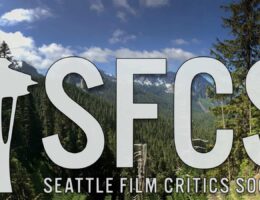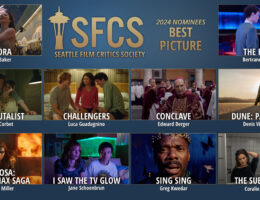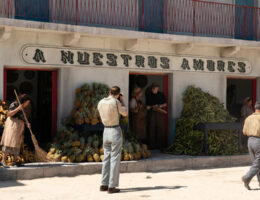Last weekend, the Sundance Film Festival concluded its second year of holding the festival entirely online. After returning from the virtual mountaintops and packing away our imaginary snow boots, Josh, Chase, and Morgen unpack some of our highlights, lowlights, and predictions from our ten days in virtual Park City.
How was your festival?
Chase Hutchinson: It was quite an enjoyable experience, though it is important to note that I know this wasn’t ideal for both filmmakers hoping to show their work in-person and for all those who had made travel arrangements that were dashed following the pivot to virtual. However, the virtual aspect remains unparalleled in terms of how seamless it all worked and how it prioritized accessibility. I caught a bunch of good flicks that I’ll be excited about seeing again in the coming months.
Josh Bis: I’ve never loved watching movies at home and miss being in the bubble of festivalgoing to shut out real world distractions, but I have to begrudgingly agree that a virtual festival is far more conducive to actually seeing a bunch of films. There’s no travel, no snow, no rushing from venue to venue, no constant stress of checking waitlists or refreshing ticket availability. Instead, it was relatively easy to see what you want and almost no social pressure not to bail (or take a break) if it isn’t working for you. The experience is also vastly more democratic, getting a bunch of new movies in front of interested audiences who might not otherwise have the opportunity to take ten days off to fly across the country for the privilege of watching movies.
It’s a conundrum because (at least for me), there’s also a different level of engagement you get from being away from home and fully immersed. All of those physical and practical requirements of needing to be in a specific place at a specific time promote a different level of enthusiasm. For better or worse, you can’t help but catch festival fever when you’re running around a beautiful place, talking about movies with friends, and hearing buzz in lines and around town. From my couch, I rated most of what I saw right around the 3-star middle, totally fine, not perfect, but far from horrible. I suspect that I’d have had stronger feelings (in both directions) if I’d had to put more effort into seeing them.
Morgen Schuler: I don’t have much to compare this year’s Sundance to since I’d never had the opportunity to go in person and wasn’t a participant in last year’s virtual version either. I agree with Josh, as a general rule I love physically being at a fest and in the audience with others. It just adds a level of giddiness or excitement even if the film ends up being kind of bad.
I have always looked at this fest as one of the festivals to attend. Something I’d like to take a vacation to experience, so maybe I’m holding off my expectations until that happens. Otherwise, it seemed to work pretty well for the small bit I was able to see. No issues at all in the technical aspects of it and the films I saw as a whole were higher caliber than most festivals I’ve attended.
Josh: I will agree that for the last two years of virtual formats, Sundance has been a standout in terms of their organization and presentation. I commend them for the way that they’ve managed to make virtual premieres feel splashy with time-limited viewings and immediate Q&As while also allowing scheduling flexibility through second screenings (and third encores for award winners). They’re also rare among the big festivals for their willingness to make almost everything available to everyone in the US.
I know that many of us are deeply invested in the preservation of in-person film festivals, but there are some major advantages to this hybrid approach. In previous years, many (if not most) of these Sundance films would’ve had a brief moment on the festival stage (and a long run on regional festival circuits) for a very limited and self-selected audience prone to grade inflation. Online, they’re accessible to a wide audience of very engaged viewers who can immediately participate in a broad conversation about fresh voices in independent filmmaking. While film buyers lose some in-person festival fever in making acquisition decisions, they may actually gain in terms of having a real sense of how these movies play to a broader viewership.
Did you do virtual stuff?
Chase: I tried to take a trip on the virtual spaceship hangout room, though found there was no one there and I was mostly just hanging out awkwardly by myself.
Josh: At least you figured out how to sit down! I borrowed a friend’s VR headset to get the full experience and my time on the spaceship very accurately reflected the experience of going to a film party without really knowing anyone. In typical social awkwardness fashion, I killed some time wandering around the room (with more vertigo), freaked out when I accidentally entered another group’s conversation bubble, and was disappointed that no matter how long I sat at the bar no one would serve me a cocktail.
On the bright side, I managed to check out one of the immersive art experiences in the gallery, the first chapter of On the Morning You Wake (to the End of the World) and found it appropriately unsettling.
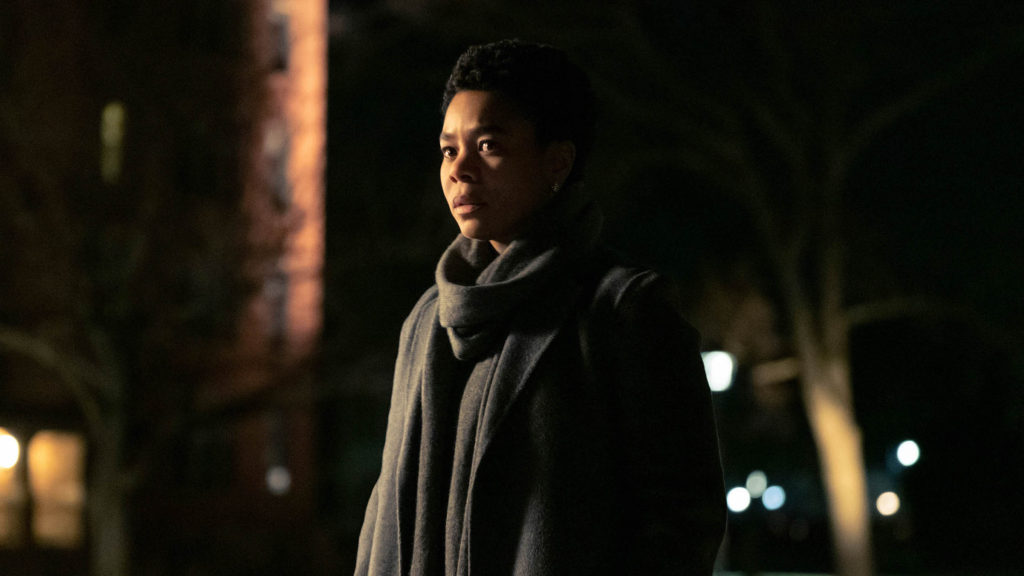
Did you pick up on any themes in the festival’s programming?
Josh: I think we’re still seeing the effects of pandemic-era filmmaking. In more than a few of the director intros or Q&As I heard comments about overcoming production constraints due to the ongoing health and safety practices. For instance, the oddball clone murder parable Dual talked about moving production to Finland and Aubrey Plaza’s small crime thriller Emily the Criminal referenced a small crew and tight shooting schedule. While it played out differently across different movies and genres, there was a sense of filmmakers making creative choices with budgets, casting, and locations to ease the burden of Covid protocols without compromising their vision.
Chase: Horror was definitely a standout this year and there were some interesting works that caught my attention. Not all of them were flawless, though all were quite distinct and unique in their vision. I was particularly struck by how Master caught me off guard with a poetic finale and how Nanny continually kept me guessing at every turn.
Josh: It did seem like horror made a big splash; so it was great to see a scary movie claiming the top jury prize in the US Dramatic Competition. I’m usually weary of gore and scares, but Nanny was right up my alleyNikyatu Jusu found ways to make even the simplest settings visually striking, conjured truly unnerving practical effects, and told a story that was well rounded and socially conscious.
Maybe I should’ve gotten more out of my comfort zone and given a few more of the horror entries a shot instead of gravitating toward my safe space of documentaries and indie dramas. A lesson for next time!
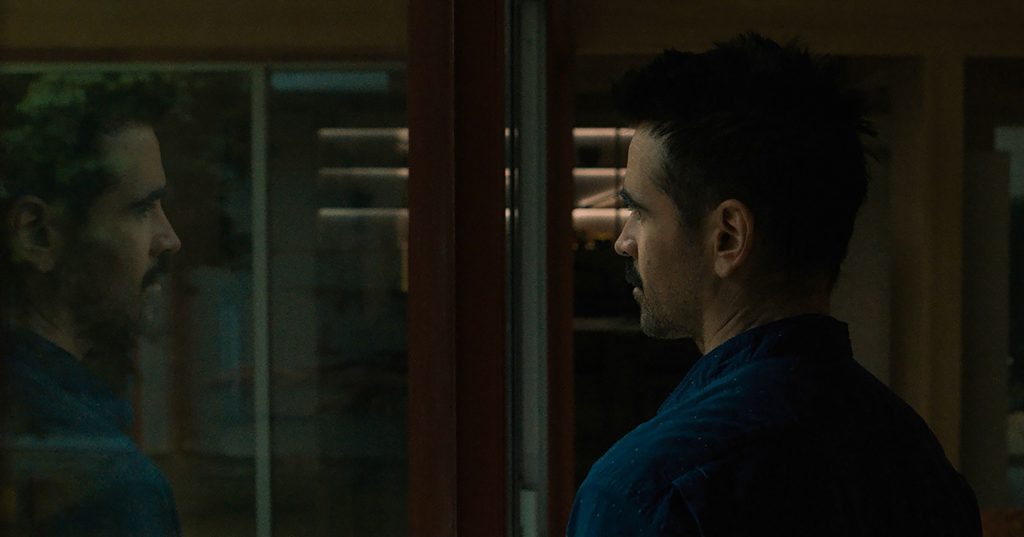
Any personal standouts?
Chase: After Yang is the unparalleled best of the fest for me. I have been an admirer of Kogonada after watching his visual essays and debut film Columbus. His second work dips into science fiction while still maintaining a strong emotional core with remarkable yet understated performances all around. It is a gorgeous work with his precise visuals that still sees him taking his storytelling to new heights. I could not have been more taken with it.
Josh: From it’s opening credits dance sequence to its closing frames, I was a huge fan of After Yang, too. A24 were well positioned to launch right from festival buzz right into a wide release; they dropped the trailer today and are releasing it simultaneously in theaters and on Showtime next month. It’s a very special movie that’s both exquisitely crafted and deeply resonant; so I’m excited for more people to have a chance to experience it for themselves.
Other than that, like festival audiences and other critics, I was fully in the tank for Cha Cha Real Smooth, Cooper Raiff’s story of a recent college graduate’s summer stint on the bar mitzvah party starter circuit. A young privileged white guy figuring out his issues while falling in love with an engaged single mother played by Dakota Johnson and befriending her neurodiverse daughter (Vanessa Burghardt, in her first feature) has so many landmines that could’ve gone horribly wrong, but Raiff navigates them all so deftly and with self-awareness of his character’s own idiocy that the whole package is miraculously resonant. I also fell hard for Meet Me in the Bathroom’s nostalgia trip for the NYC rock revival of the early-2000s (I’ve had Lizzy Goodman’s book on my shelf for years and will finally have to crack it open) and can’t wait to see the next to films in the jeen-yuhs Kanye trilogy.
Morgen: Admittedly my participation in this year’s Sundance was pretty limited but I did get to see a few films. Out of those, there was one standout by far and that was Girl Picture. While it could be considered your standard teenage angst drama, there was a lot more depth to it than the ones in my day back in the 90’s. Strong trio of female cast members, each with their own history and emotional turmoil and not just there to support the dramatic love story.
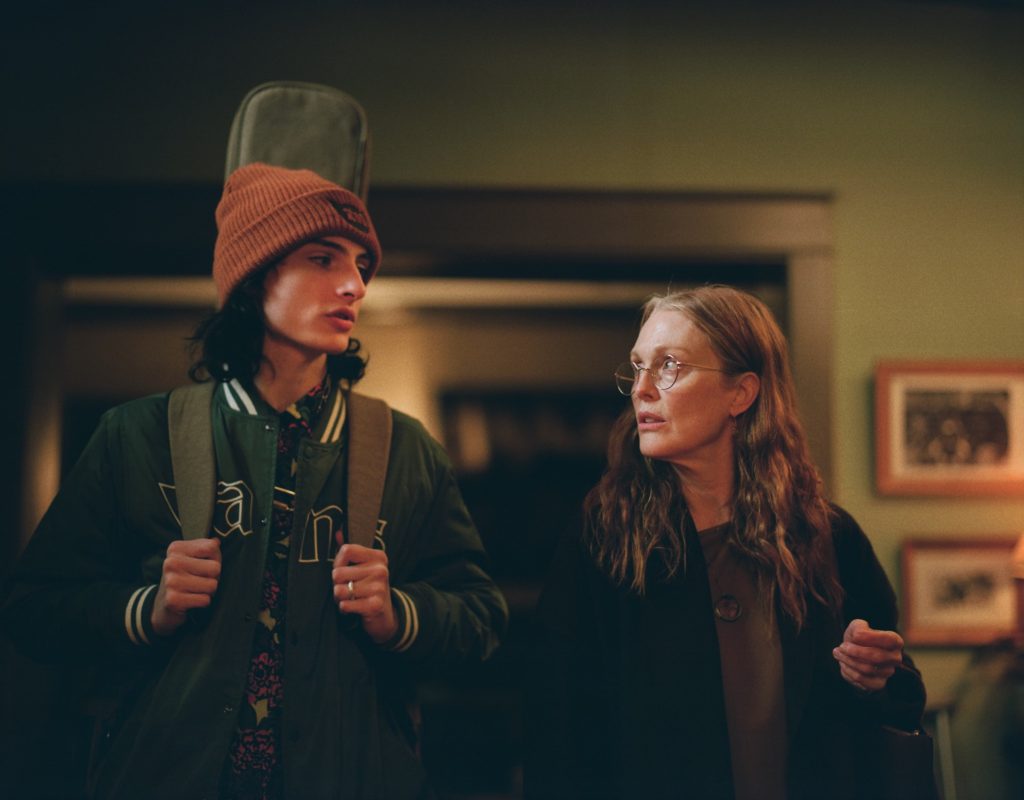
Any misses?
Josh: Like most indie film festivals my overall experience was that there was a whole lot of decent efforts, a good share of “interesting but not perfect”, and a precious few standouts on the extreme ends of the spectrum. I didn’t abandon anything I started but the closest I came to jumping ship was with Lena Duhnam’s Sharp Stick. Parts of it were quite funny and I could squint and imagine a message of empowerment and discovery, but she hangs all these good jokes and fascinating performances around a story of a character whose extreme naivety simply doesn’t make sense even in the context of the world that she inhabits. The character comes across in an uncanny valley between childlike and alien, making her seduction and near-robotic march through a checklist of sexual-conquests unintintionally disturbing.
Chase: When You Finish Saving the World was one of the first I saw at the festival and it made me very nervous for what was coming next. I am thankful that I ended up seeing a bunch of far better films, though my goodness did this one completely miss the mark. I had been quite interested in what Jesse Eisenberg would do with his feature directorial debut, though this one just rang completely hollow for me. It all was about a family finding connection with each other though it ended up being a rushed, meandering experience that never amounted to much of anything. It might work for others, though I will not be among them.
Josh: I didn’t love it, but thought it felt like a pretty Sundance-y way to kick off the festival. I liked the cute reunion of having it produced by his old Zombieland friend Emma Stone’s new company. And learning that the story was inspired by his late mother-in-law, who also started a shelter in Indiana and whose daughter he met through performative activism, explained the degree to which. Finn Wolfhard’s dilettante artist character seemed like a somewhat self-loathing version of a Jesse Eisenberg stereotype.
Morgen: While all of the films I saw were worth my time, the one that fell short was My Old School. It had all the drama and ridiculousness one could ask for, but it started feeling flat about halfway through. A lot of my issues with it would have been fixed had the director taken himself out of the story and had the ability to see it from an outside perspective. It’s almost as if you had to be a schoolmate at the time to really get into this one. On the flip side, Alan Cumming was stellar despite the fact he spent the entire movie sitting in a chair mouthing someone else’s words… and I can’t even tell you why.

Reactions to the awards?
Josh: Sundance announced all of their awards on Friday afternoon. Audience awards went to Cha Cha Real Smooth (US Dramatic), Navalny (US Documentary), Girl Picture (World Cinema Dramatic), The Territory (World Cinema Documentary), and Framing Agnes (NEXT). Grand Jury prizes were awarded to Nanny (US Dramatic), The Exiles (US Documentary), Utama (World Cinema Dramatic), and All That Breathes (World Cinema Documentary). I crammed a bunch of award winners into my final festival weekend and have to say that I found no arguments with the will of the people and juries. These were by and large a pretty respectable crop of winners.
Chase: I was glad to see that the aforementioned Nanny got the U.S. Grand Jury Prize for dramatic as it really had some striking visuals and mythology that stuck in my mind more than anything. Unsurprisingly, Cha Cha Real Smooth took the Audience Award for U.S. Dramatic as it really does fall under the “crowd pleaser” banner though I think it is more than that.
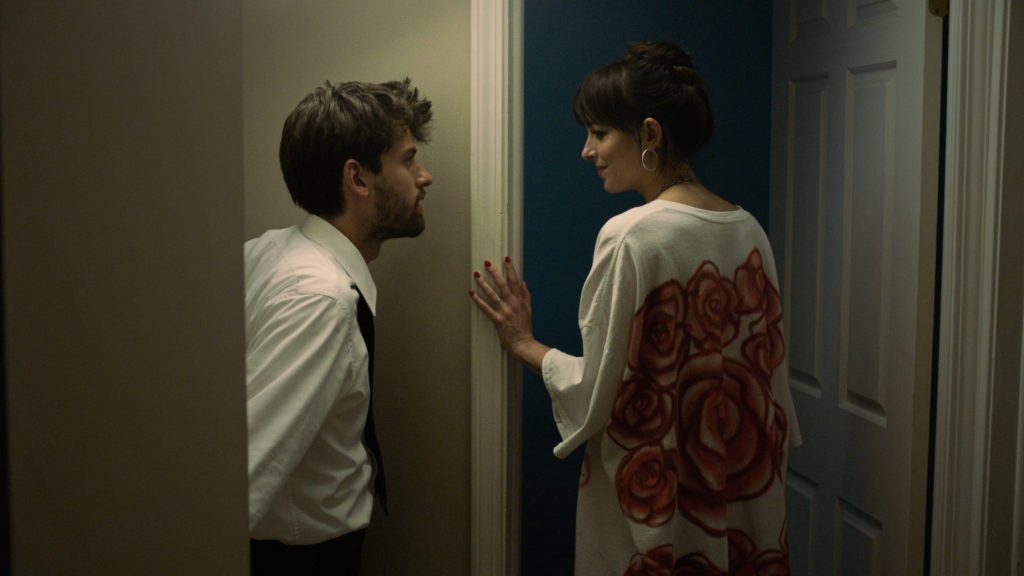
Predictions for breakouts?
Josh: Last year’s Sundance rocketed Judas and the Black Messiah into wins at the delayed Academy Awards as well CODA, Flee, and Summer of Soul which appear to be on track to win some nominations of their own this year. Which movies from this year’s festival do you think are bound for commercial and/or critical success?
Chase: Without being a broken record, it will certainly be Cha Cha Real Smooth. It hits all the right notes it needs to and is overflowing with charm while having a melancholic core.
Josh: Yeah, I was only a little surprised that one of my favorites was also the big winner of both the audience award and the acquisition lottery. Apple, which opened its deep pocketbook for CODA last year and seems to have successfully steered it from a quiet mainstream release to a surprisingly successful awards campaign, spent $15M to win the bidding war for Cha Cha Real Smooth.
Josh: Navalny coming out as the ultimate festival favorite makes complete sense: it plays like a thriller, has an incredibly charismatic and defiant subject, and is very much of the moment. Sundance always launches a few documentaries that go the distance and Navalny is easily the one that’ll make the leap. It’s produced by CNN and has distribution with HBOmax so this is hardly a risky prediction. I expect that everyone will be talking about it very soon.
Revisit all of our festival reviews and coverage on our Sundance 2022 tag.
